There is something uniquely romantic about travelling by train. Neither as stressful as planes, nor as tiring as bicycles, or as bumpy as coach or car, trains move serenely towards their destinations, giving passengers full view of the world beyond without making them interact with it.
But while trains enjoy a (mostly) positive reputation, at least when commuter-free, the same cannot be said for their crowded, litter-strewn, and occasionally urine-stained stations. These 10 terminals are helping reclaim the train station reputation, whether for art, architecture, or, in one case, tropical plant life …
1. Sao Bento Station, Portugal
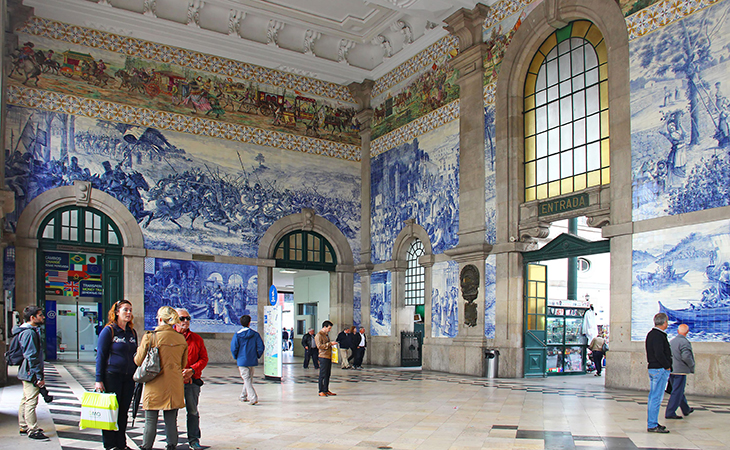
Often visited by tourists with no intention of travelling, the main hall at Sao Bento Station in Porto is a strange mixture of ticket office, art gallery, and museum. Once a Benedictine convent, the tiled walls are coated in sumptuous azulejo tin-glazing, painted by Jorge Colaco at the turn of the 20th century.
Read more: Cool train trips around Australia
The national monument and UNESCO World Heritage site features 20,000 tiles depicting turning points in Portuguese history, from the Battle of Valdevez to the Conquest of Ceuta.
2. Chhatrapati Shivaji Terminus, India
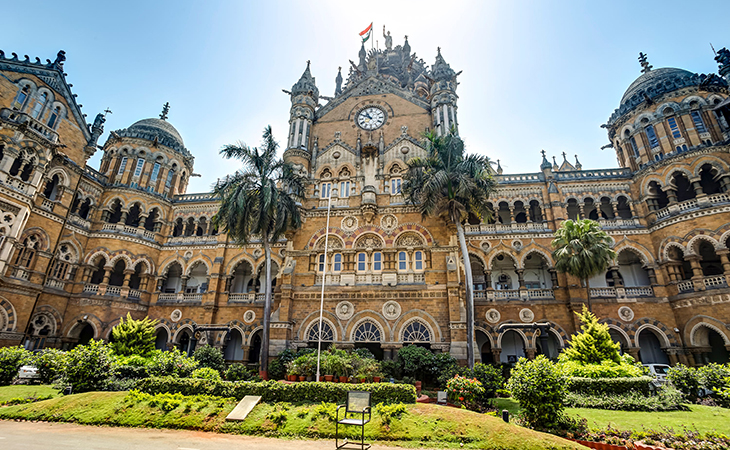
An impossibly grand, Gothic revival masterpiece in the heart of modern Mumbai, this ridiculously large train station fits right in with the lavish city palaces for which India is so justly known. Built at the height of the empire for Queen Victoria’s golden jubilee, the station was christened the Victoria Terminus, and is still widely referred to by locals as ‘VT’.
A UNESCO World Heritage site, the station received renewed global attention after starring in 2008 Best Picture winner Slumdog Millionaire, and serves more than three million passengers a day.
3. Atocha Station, Madrid
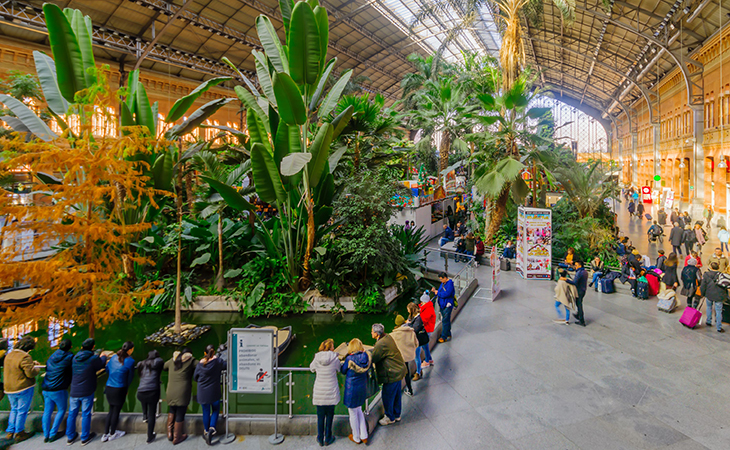
The terms ‘train station’ and ‘tropical garden’ do not often appear in the same sentence, but Madrid’s Atocha Station is an exception to the rule. A genuine concrete jungle, the concourse welcomes commuters with a makeshift greenhouse filled with exotic flora. Among the 7000-strong catalogue you’ll glimpse royal palms from Cuba, South African bird-of-paradise flowers, and – most appropriately – the rare Madagascan traveller’s tree.
Until 2018, the display included a number of lily ponds, which hosted not just fish but a 300 strong community of terrapins, mostly abandoned pets rescued from city waterways. The reptiles were relocated after turning to cannibalism in an effort to fight overpopulation.
Read more: Luxury boutique hotel made from vintage train carriages
4. Antwerp Central, Belgium
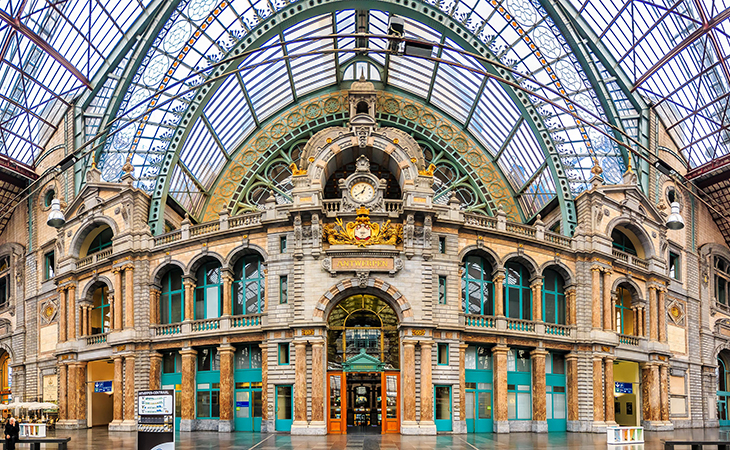
A sensory overload of marble, granite and glass, Antwerp Central is half architectural masterpiece, half architectural mess. Designer Louis Delacenserie plundered almost every art style in history for the project – so much so that the protagonist in W. G. Sebald’s novel Austerlitz is hailed a genius after managing to list them all.
Often dubbed “the railway cathedral”, what could have been a Frankenstein’s monster is instead a chaotic tour de force – ornate, multifarious, and majestic.
5. Kanazawa Station, Japan
Most train stations welcome you with overflowing rubbish bins, crowded taxi ranks, and gutters strewn with cigarette butts. Kanazawa greets visitors with a large vermilion gate which, when seen at the right angle, combines with the contours of the building to resemble a samurai helmet.
The Japanese are unrivalled in their ability to blend tradition with modernity. Giant, wooden, torii-style monument on the outside; sleek, extremely punctual, 300kmh-plus bullet trains within.
6. Dunedin Station, New Zealand
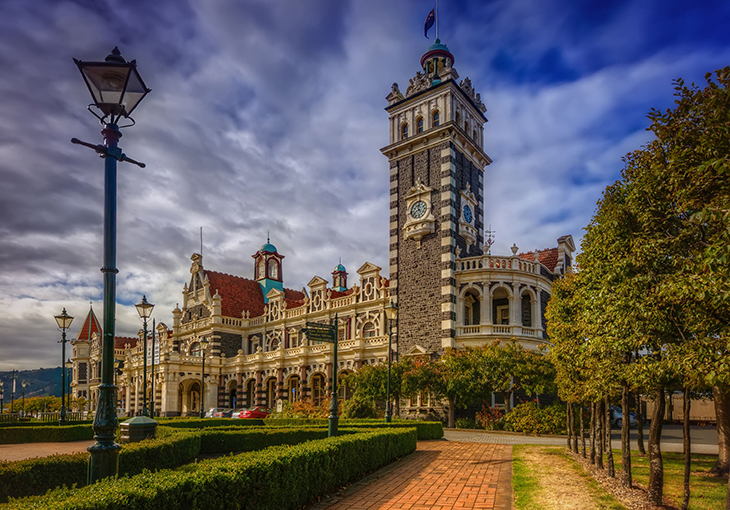
Adorned with cupolas, colonnades and a 37-metre clock tower, Dunedin Station would have fitted in perfectly during the High Renaissance, and sports so many colourful embellishments that it earned architect George Troup the nickname “Gingerbread George”.
It was not meant as a compliment, but Mr Troup’s delightfully decadent, wholly unrestrained style has ensured that today the station is by far the most photographed building in Dunedin. The interior is similarly ornate, and customers in the booking hall can enjoy porcelain friezes and a 750,000-tile mosaic floor.
7. Helsinki Central, Finland
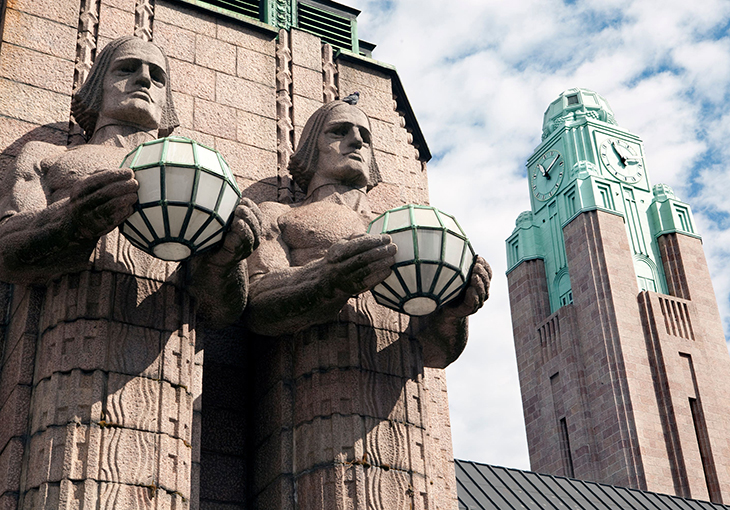
Strangely Soviet at best – full-blown Ministry of Truth at worst – the granite facade of Helsinki Central sports a green-tinged clock tower, and a quartet of austere statues flanking the entrance, holding spheres that light up after dark. It’s the most visited building in the whole of Finland, and the upper floor features a private waiting lounge reserved exclusively for the Finnish president.
It’s unquestionably beautiful – in a cold, brutal sort of way, but don’t expect much sympathy from these stony-faced monoliths if you arrive 30 seconds late for your train.
8. Liege-Guillemins Station, Belgium
Sleek, serpentine, and so mesmerisingly fluid that it seems to shimmer before the eye, Liege Station has won accolade after accolade for its ultra-modern architecture, cast mostly from white concrete, glass and steel.
A 160m monumental arch curves far above the platforms, and light pours in through the heavily strutted ceiling. Even the escalators form a geometric function in the design, the work of Spanish engineer Santiago Calatrava.
9. CFM Railway Station, Mozambique
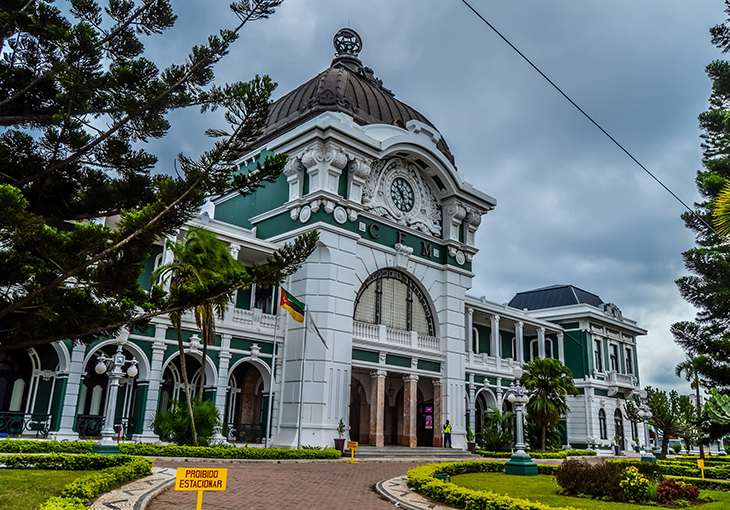
A mint-green mishmash of marble pillars, iron-wrought latticework, and other Beaux-Art stylings, this station in Mozambican capital Maputo invites a journey through time. The seats and ticket counters are wooden, and antique steam locomotives still chug along the tracks.
A remnant of Portuguese colonial rule, the station is thought to be a lesser-known work of renowned French architect Gustave Eiffel. See if you can guess what he’s normally known for.
Read more: Awe-inspiring train journeys
10. Berlin Hauptbahnhof, Germany
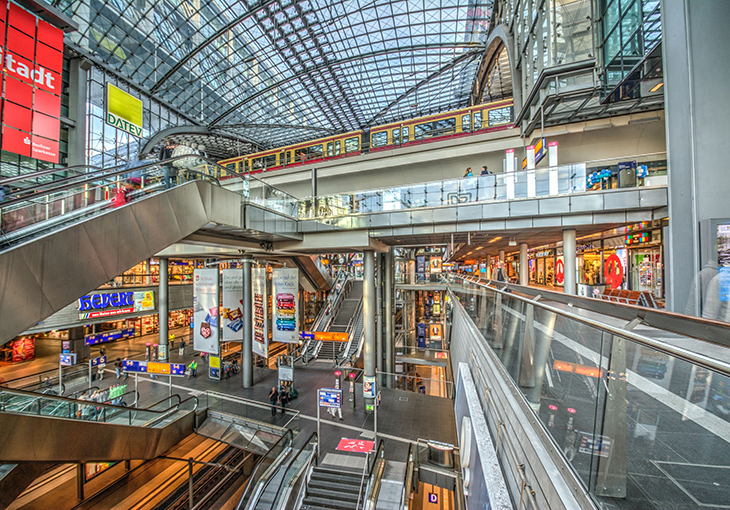
Five storeys of interlocking walkways are straight out of an M. C. Escher painting. Only Germany could construct something so utterly chaotic and yet so relentlessly efficient. The steel-and-glass construction has 54 escalators and 34 lifts, while the trains themselves stop at suspended platforms in the station’s centre, visible to passengers several floors below.
When it opened in 2006, Deutsche Bahn chief executive Hartmut Mehdorn described it as “the most beautiful station in the world”. He would say that, but he’s not far wrong.
What’s the most beautiful or unique train station you’ve ever visited? Do you like travelling by train?
– With PA
If you enjoy our content, don’t keep it to yourself. Share our free eNews with your friends and encourage them to sign up.

